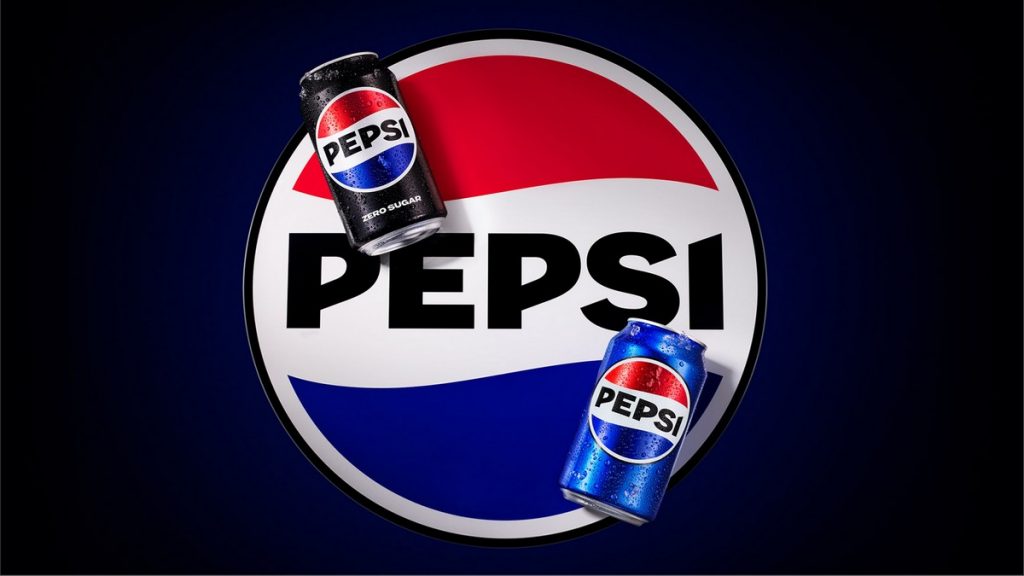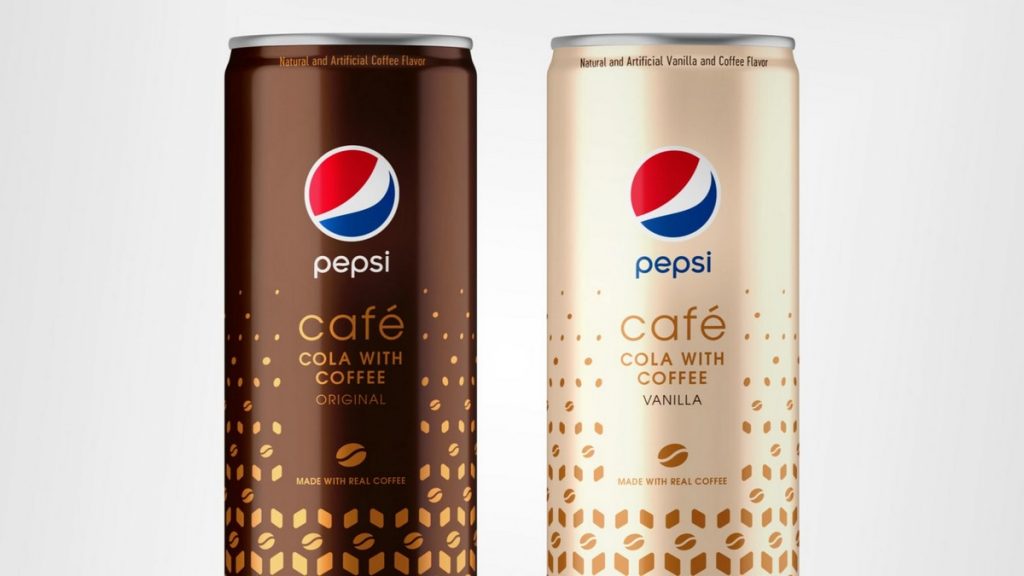The Marketing mix of Pepsi analyses the 4Ps of Pepsi, including the Product, Price, Place, and Promotions. Pepsi Marketing Mix has helped the Pepsi brand and its manufacturing company, PepsiCo, to boost its brand image, target customers, increase its market share, and become the industry leader in the non-alcoholic beverage industry.
The Pepsi marketing strategy focuses on the elements of the marketing mix framework like Pepsi products, product strategy, distribution channels strategy, pricing strategy, public relations, various brand ambassadors, and promotional strategy so that it can analyze the brand, create business and marketing strategies to position itself competitively, take the company forward and help to achieve the desired business goals.
Table of Contents
Introduction: Pepsico / Pepsi
# Pepsi
- Type: Cola
- Introduced: 1893 as Brad’s Drink
- Manufacturer: PepsiCo
# Pepsico
- Origin Country: USA
- Founded: 1898
- Founder: Caleb Bradham
- Headquarters: New York, USA
- Employees in 2023: 309,000
- Annual Revenue in 2023: 79.470 billion USD
- Net Income in 2023: 7.610 billion USD
- Market Value in 2023: 240.690 billion USD
- Market Cap in 2023: 216.150 billion USD
PepsiCo Inc. was formed with the merger of two great companies, Frito-Lay Inc. and Pepsi-Cola Company, in 1965. It is the 2nd most prominent company in the food and beverage sector in the world based on net revenues, market cap, and profit.
The multinational company manufactures, markets, and distributes all PepsiCo’s products like soft drinks from brands like Pepsi, Mountain Dew, Diet Pepsi, and Pepsi Max, fruit juices from brands like Tropicana, bottled water from Aquafina, snacks like potato chips, tortilla chips and corn chips from Lay’s, Ruffles, Quaker Oats and Fritos, etc. and beverages like tea from Lipton Teas etc. to the target audience in the target market.
Pepsi from PepsiCo is one of the leading soft drink brands in the world in 2023 based on market revenues. The carbonated drink was originally developed by Caleb Bradham in 1893 and introduced as Brad’s Drink. The soft drink was renamed Pepsi Cola and later Pepsi in 1898 and 1961, respectively.
Pepsi Product Strategy
The American company PepsiCo Inc. is associated with the whole food and beverage industry sector and is a leading beverage, food products, and snack brand worldwide. Its brand Pepsi has adopted a customer-centric approach with the help of the Pepsi marketing strategy to increase Pepsi product sales in the target market.
Pepsi competes on a one-to-one basis with its arch-rival, The Coca-Cola Company, on almost all fronts and product categories. Pepsi decided to target the young and new generations of health-conscious people with different Pepsi Products and variants.
PepsiCo offers a wide range of products in its mix, spanning various beverage and snack categories.
The new Product Mix of Pepsi in 2023 is as follows (Source).
- Carbonated Soft Drinks: This includes their flagship product, Pepsi, along with its variations like Diet Pepsi, Pepsi Zero Sugar, Pepsi Wild Cherry, and limited-edition flavors often introduced seasonally or regionally.
- Non-Carbonated Beverages: PepsiCo’s portfolio extends beyond carbonated drinks to include non-carbonated beverages like Lipton Iced Teas (in partnership with Unilever), Gatorade sports drinks, Tropicana juices, and Aquafina bottled water.
- Energy Drinks: The company has ventured into the energy drink market with products like Mountain Dew Game Fuel and Rockstar Energy, catering to a growing segment of consumers seeking energy boosts.
- Snack Foods: Through its Frito-Lay division, PepsiCo offers a variety of snack foods, including popular brands like Lay’s potato chips, Doritos, Cheetos, Fritos, and Ruffles, as well as nut-based snacks, seeds, and more.
- Healthy Snacks and Foods: Recognizing the shift towards healthier eating habits, PepsiCo has diversified into healthier snack options and foods. This includes products like Quaker Oats, whole grain snacks, and healthier versions of their existing snack lines.
- Dairy Products: In specific markets, PepsiCo has expanded into dairy products, including yogurt and milk-based drinks, often through partnerships or acquisitions of existing dairy brands.
- Convenience Foods: This category includes easy-to-prepare food products like pasta, rice dishes, and ready-to-eat meals under various brand names, catering to the demand for convenience in meal preparation.
PepsiCo’s product mix reflects its strategy to diversify beyond soft drinks, catering to various consumer tastes and preferences across different food and beverage categories. Their portfolio balances traditional products with new, innovative offerings to stay competitive and relevant in the ever-changing consumer market.
Pepsi Place Strategy
PepsiCo has spread its product presence to nearly 200+ countries across almost all urban and rural locations. The company has 36 bottling plants to manufacture and bottle the Pepsi variants. PepsiCo’s original soft drink product Pepsi Cola was the second-most carbonated drink sold in the United States after Coca-Cola. It has gained a substantial share amongst the targeted customers in India.
The company follows a policy of acquisitions and global expansion. It has 23 soft drinks, fruit juices, and snack brands like Gatorade, Tropicana, Pepsi, Diet Pepsi, Mountain Dew, Sierra Mist, Cheetos, Aquafina, Pepsi Max, Bubly, and Quaker Oats Company with $1 billion in sales. Some prominent brands formerly owned by PepsiCo include North American Van Lines, KFC, Pizza Hut Tac, Bell, etc.
Here’s the place strategy of Pepsi.
- Global Retail Distribution: Pepsi products are widely available in various retail outlets worldwide, including supermarkets, convenience stores, vending machines, and grocery stores. This extensive distribution ensures that Pepsi products are easily accessible to consumers globally.
- Online and E-commerce Platforms: In response to the growing trend of online shopping, Pepsi has expanded its presence on e-commerce platforms, allowing consumers to purchase their products online for home delivery or in-store pickup.
- Restaurants and Foodservice Venues: PepsiCo has partnered with numerous restaurants, fast food chains, cinemas, and other food service venues. These partnerships ensure the availability of Pepsi beverages in dining and entertainment settings.
- Strategic Location Marketing: Pepsi employs location-specific marketing strategies, tailoring its product offerings and promotions to suit the tastes and preferences of consumers in different regions and countries.
- Direct-to-Consumer Channels: In some markets, PepsiCo has explored direct-to-consumer channels, allowing customers to purchase products directly through subscription services or brand-specific websites.
Pepsi Pricing Strategy
The Pepsi marketing strategy encourages bulk sales as the company has kept the higher volumes cheaper than the ones in smaller volumes. This is why the company has bulk buyers and retailers, as they can get a reasonable margin price on the products. Moreover, bulk sales mean more profits for the parent company.
Pepsi’s pricing strategy is a dynamic and multifaceted approach, skillfully balancing competitive market demands, brand positioning, and consumer value perception. Here’s the pricing strategy.
- Competitive Pricing: Pepsi consistently employs a competitive pricing strategy to contend with its main rivals, particularly Coca-Cola. By pricing its products comparably or slightly lower than its competitors, Pepsi aims to attract cost-conscious consumers while maintaining its market share in the highly competitive soft drink segment.
- Psychological Pricing: Like many consumer brands, Pepsi uses psychological pricing tactics. For example, pricing a bottle at $1.99 instead of $2.00 makes it appear significantly cheaper, a strategy that can effectively increase sales volumes.
- Promotional and Discount Pricing: Pepsi frequently uses promotional pricing strategies such as discounts, bundle offers, and seasonal sales. These promotions aim to boost short-term sales, attract new customers, and encourage bulk purchases.
- Geographic Pricing Strategy: Understanding the global expanse of its market, Pepsi adjusts its prices based on geographic location. This considers factors like local purchasing power, distribution costs, market demand, and the competitive landscape in different regions.
- Product Line Pricing: Pepsi employs product line pricing within its diverse product portfolio. This involves setting different product price points based on features, sizes, or flavors. For instance, standard Pepsi may be priced lower than its specialized variants like Pepsi Zero Sugar or Pepsi Wild Cherry.
- Dynamic Pricing in Response to Market Conditions: Pepsi is known to adjust its pricing in response to changes in commodity costs, such as sugar and aluminum, and in reaction to competitive actions in the market. This flexibility ensures that the brand remains competitive and profitable.
In summary, Pepsi’s pricing strategy combines competitive and psychological pricing, promotional tactics, geographical considerations, and dynamic market responsiveness. This strategy helps Pepsi maintain its strong market position and cater to a diverse range of consumers across different markets.
Pepsi Promotional Strategy
The image of Pepsi is that of a drink for the younger and trendy generation and an apt beverage for health-conscious people. Pepsi’s marketing strategy has adopted niche promotional strategies, creative ideas, catchy slogans, public relations, various brand ambassadors, and a unique blue logo to boost the customers’ image, visibility, and brand awareness.
Pepsi’s promotional strategy includes the use of the following promotional tools.
Traditional Media
Pepsi is a drink for the masses, and it has rightly used traditional media like television, radio, newspapers, magazines, billboards, and hoardings to promote the brand across all sections of society.
Celebrity Endorsements and Brand Ambassadors
Pepsi was among the first few companies to realize the importance of using celebrities as influencers to promote the company and its products. It has cast Cindy Crawford, Britney Spears, and Michael Jackson in the Pepsi Advertising campaigns. Film actress Joan Crawford became Pepsi’s spokesperson and brand ambassador and appeared in several advertising campaigns.
Sponsorships
Pepsi has made sponsorship deals for sporting events like the National Hockey League, National Football League, UEFA Champions League, Carolina Hurricanes Major League Soccer, etc.
Social Media Platforms
Pepsi uses social media platforms like Facebook, Twitter, YouTube, and Instagram to host contests, using the hashtag strategy to connect with the young generation. It also routinely posts recipes that will go perfectly with Pepsi.
Digital Campaigns – Notable Digital Marketing Campaigns
The Choice of a New Generation
This ad campaign in 1984 featuring the pop star Michael Jackson was a huge hit with the masses as sales figures skyrocketed and the company kept counting dollars.
Joy of Pepsi
The ad campaign “Joy of Pepsi” once again boosted brand image and visibility in the market.
New Can 1992
The campaign “New Can” featuring Cindy Crawford was released in 1992 and became hugely popular in no time.
Some Recent Video ads and Print ads for Pepsi are:
Liked this post? Check out the complete series on Marketing Mix


Hello Hitesh
My name is Beth Veeder. I’m so glad to chat with you. I hope you’re the person that could help me with an advertising/marketing idea that I’ve stumbled upon…an ahha moment…surprise factor. I’m positive you’re going to be blown away. My idea would be awesome to launch during Super Bowl. This is something that will have people talking. Please feel free to contact me if you would like more details.
I was. Just wondering if I had a mix of Mt dew that is better than any so far and would be perfect to market with dirt sports because I call it dews dirt mix because it’s grey color and could be changed to any color. It’s a mixture of 3 flavors who would I contact?